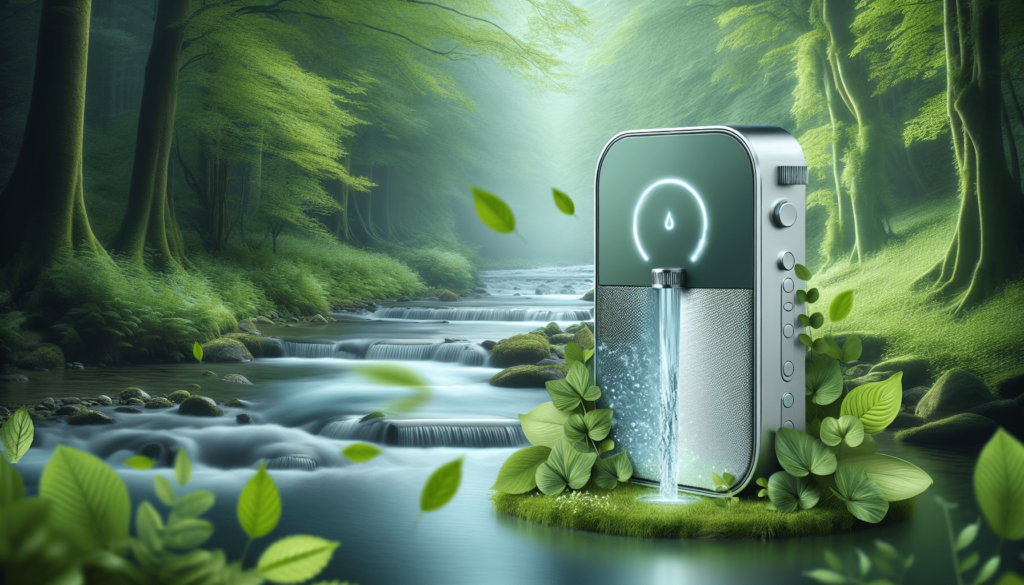Have you ever considered how important access to clean water is when you’re on the go or in situations where traditional water supplies are compromised? Portable water purification systems have come a long way in ensuring that you can enjoy fresh and clean water, no matter where you are. Let’s look into the latest advancements that are making waves in this essential field.
What Are Portable Water Purification Systems?
Portable water purification systems are devices or methods that allow you to purify water when you’re away from home. These systems are designed for various situations, including emergency preparedness, outdoor adventures, and travel. Their primary function is to remove harmful contaminants from natural water sources, ensuring that what you drink is safe and healthy.
Why Are They Important?
Access to clean water is critical for health and survival. In areas affected by natural disasters, camping trips, or during long hikes, you may find yourself needing to rely on natural water sources, which can contain harmful bacteria, viruses, and chemicals. Portable purification systems not only provide peace of mind but also empower you to take control of your drinking water safety.
Latest Advancements in Portable Water Purification Systems
The technological landscape is ever-evolving, and portable water purification systems have seen some groundbreaking advancements. These improvements focus on efficiency, portability, and user-friendliness.
1. Ultra-Filtration Technology
Ultra-filtration (UF) technology is one of the significant advancements in water purification. Unlike traditional filtration systems that may allow larger particles to pass through, ultra-filtration can effectively remove pathogens, including bacteria and viruses.
How It Works
Ultra-filtration employs a membrane with microscopic pores that filter out contaminants while allowing water to pass through. This technology is compact, making it ideal for portable systems.
| Feature | Ultra-Filtration | Traditional Filtration |
|---|---|---|
| Efficiency | High | Moderate |
| Portability | Excellent | Variable |
| Contaminant Removal | Bacteria, viruses | Larger particles only |
2. UV-C Light Purification
Ultraviolet (UV-C) light purification is becoming increasingly popular for portable water systems. This method leverages the power of UV-C light to destroy harmful microorganisms without chemicals.
Benefits of UV-C Purification
- Chemical-Free: It does not leave any chemical residues in the water.
- Fast: UV-C purification can treat water in as little as 30 seconds.
- Effective: It is highly effective against a broad spectrum of microorganisms.
3. Advanced Reverse Osmosis (RO)
Reverse osmosis systems are another cutting-edge development in portable water purification. These systems use a semi-permeable membrane to remove a wide range of contaminants, including salts, heavy metals, and microorganisms.
Features of Portable RO Systems
Modern portable reverse osmosis systems are designed to be lightweight and compact. They can usually function without electricity and have built-in storage tanks to hold purified water.
| Advancement | Feature | Benefits |
|---|---|---|
| Compact Design | Lightweight and easy to carry | Ideal for travel or hiking |
| Storage Capacity | Built-in water tank | Convenient access to purified water |
| Self-Sufficient Power | Battery-operated options | Use in remote locations |
4. Solar-Powered Water Purification
With the increasing accessibility of solar technology, some portable purification systems now come with solar power options. These systems utilize solar panels to purify water, making them perfect for extended outdoor excursions or emergencies where electricity is unavailable.
Advantages of Solar Power
- Sustainable: Reduces dependency on batteries or electricity.
- Environmentally Friendly: Solar energy is renewable and reduces carbon footprint.
- Versatile: Many systems are designed to be lightweight and easy to transport.

Comparison of Popular Portable Water Purification Systems
As advancements continue to shape the market, it’s beneficial to compare some of the prominent water purification systems available to you today. Below is a table summarizing the key features of several popular portable water purification systems.
| System Name | Purification Method | Weight | Purification Time | Effective Against |
|---|---|---|---|---|
| LifeStraw | Microfiltration | 2 oz | Instant | Bacteria, protozoa |
| Sawyer Mini | Hollow Fiber Filtration | 3 oz | 2-3 minutes | Bacteria, protozoa, microplastics |
| SteriPEN | UV-C Light | 4 oz | 30 seconds | Bacteria, viruses |
| Katadyn BeFree | Hollow Fiber Filter | 2.82 oz | 2 minutes | Bacteria, protozoa |
| MSR Guardian | Reverse Osmosis | 8 oz | 30 minutes | Viruses, bacteria, chemicals |
5. Multi-Stage Filtration Systems
Multi-stage filtration systems incorporate different methods to ensure comprehensive purification of water. These systems often combine sediment filters, activated carbon, and UV-C light to maximize contaminant removal.
Why Choose Multi-Stage?
- Comprehensive Purification: Capable of removing various contaminants.
- Improved Taste and Odor: Activated carbon enhances the taste and smell of drinking water.
- Durability: Many multi-stage systems are built to last and can handle a variety of water quality issues.
6. Smart Technology Integration
The integration of smart technology into portable water purification systems represents a leap in user-friendliness and efficiency. Many new systems include features such as:
- Bluetooth connectivity: This allows you to monitor the purification process via a smartphone app.
- Reminders for filter changes: Systems can alert you when filters need to be changed, ensuring optimal performance.
- Water quality sensors: Smart systems can measure the quality of your water and provide real-time feedback.
Key Considerations When Choosing a Portable Water Purification System
Before making a purchase, it’s essential to consider several key factors:
1. Portability and Weight
If you plan to carry your water purification system on hikes, camping trips, or when traveling, the weight and portability are significant considerations. Look for lightweight options that won’t add unnecessary bulk to your gear.
2. Purification Capacity
How much water do you need to purify at a time? Some systems are designed for individual use, while others can cater to larger groups. Consider your needs when selecting a capacity that works for you.
3. Maintenance Requirements
All systems require maintenance to function correctly, such as cleaning and replacing filters. Investigate how often and what kind of maintenance is needed to keep your system running efficiently.
4. Cost and Budget
Portable water purification systems can range from budget-friendly options to more advanced, expensive models. Determine your budget and seek systems that provide the best balance between cost and features.
5. Certifications and Testing
Select systems that have been tested and certified by established organizations, such as NSF International or the Water Quality Association. Certifications can give you confidence in the system’s performance and safety.

Practical Tips for Using Portable Water Purification Systems
You’re equipped with the knowledge of the latest innovations in portable water purification technologies. Now it’s time to maximize your experience with practical tips:
1. Understand the Water Source
Before purifying water, it’s crucial to assess the water source. Identify if the water is from a river, lake, or tap. Turbid water may require pre-filtration to remove large particles that could clog your purification system.
2. Follow Manufacturer Instructions
Always read and follow the manufacturer’s guidelines for use and maintenance. Each system will have specific instructions to ensure optimal performance and safety.
3. Have a Backup Method
While modern systems are reliable, it’s wise to have a backup purification method, such as water purification tablets, just in case your system fails or requires maintenance.
4. Regularly Monitor Water Quality
If your purification system includes monitoring capabilities, regularly check the water quality and purification metrics. This will help you maintain a safe drinking supply.
5. Stay Informed
As technology continues to evolve, remaining informed about advancements and best practices in water purification can keep you well-prepared for any circumstance.
Conclusion
Clean drinking water is not just a privilege; it’s a necessity. As you’ve seen, portable water purification systems have made incredible strides in technology, making it easier and safer for you to access fresh water wherever you go. By understanding the latest advancements and selecting the right system for your needs, you can ensure that you’re well-prepared for your next outdoor adventure or any unexpected situation. Remember, having clean water is essential not only for hydration but also for maintaining your health and wellness on the go.

